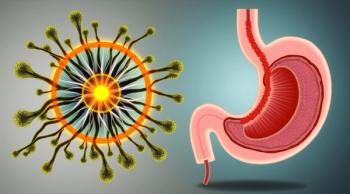
Partners Launch Renewed Battle Against Chagas Disease
GENEVA -- A new effort to eliminate Chagas disease by 2010 has been launched at a World Health Organization (WHO) meeting of disease experts and partners. The strategy is designed to answer key questions about the treatment and control of Chagas disease, and to coordinate global efforts toward the prevention of transmission through a new Global Network for Chagas Elimination.
''The establishment of the WHO Global Network to combat Chagas disease occurs in the broader context of the WHO's renewed fight against neglected tropical diseases. The prospects for reducing the burden caused by these diseases have changed dramatically in the past few years. While Chagas disease is controlled in many countries in the Americas, commitment must be strengthened as elimination of the disease is now attainable. Cases identified in non-endemic countries have demonstrated the need to globalize our efforts,'' said Dr. Margaret Chan, WHOs director-general.
Chagas disease is a serious, potentially life-threatening illness caused by a protozoan parasite called T. cruzi. Early symptoms can include fever, fatigue, swollen glands and heart pain, but in later years the infection can lead to chronic debilitation caused by progressive destruction of the heart muscle. It occurs mainly in Latin America where, during the 1980s, over 20 million people were thought to be infected. Since then, Latin American countries have made enormous efforts to control the infection, such that current estimates suggest that less than 8 million people remain infected. However, the infection is no longer confined to the Americas because of blood transmission and organ transplantation. Cases have been identified in non- endemic countries in Europe, and in Canada and the United States.
''Remarkable success has been achieved in the Region of the Americas in eliminating vectorial transmission of Chagas. Much remains to be done, however, to reduce the risk of transmission to recipients of blood or blood products obtained from migrants from Chagas endemic areas, and to ensure screening and diagnosis of congenital Chagas disease,'' said Dr. Mirta Roses, director of the Pan American Health Organization and regional director of the WHO Americas Region. The Pan American Health Organization
(PAHO) has worked with the countries on sub-regional initiatives to prevent, control and treat Chagas with key partners, including Japan International Cooperation Agency (JICA), Agence Canadienne de Developpement International (ACDI), Agencia Espanola de Cooperacion Internacional (AECI), Medecins sans Frontieres (MSF), International Development Research Centre (IDRC) and others.
''The Pan American Health Organization's successes in Chagas' control are a significant contribution to the global strategy to eliminate this debilitating disease,'' said Dr. David L. Heymann, WHO's assistant director-general for communicable diseases. ''The new WHO Global Network for Chagas Elimination will ensure we leverage and expand upon the successes in Latin America.''
The parasite that causes Chagas disease is called T. cruzi and is mainly transmitted by large blood-sucking insects, sometimes known as kissing bugs which often colonize the homes of poorer rural communities in Latin America. But the parasite can also be transmitted by blood transfusion or organ transplant from infected donors, and occasionally by transplacental passage from infected mother to newborn baby. In some regions, particularly in the southern cone countries of South America, the chronic infection can also give rise to severe intestinal problems requiring complex corrective surgery.
Comprised of expert-led technical groups, the WHO Global Network will focus on several key aspects of the Chagas problem including:
-- Strengthening epidemiological surveillance and information systems;
-- Preventing transmission by blood transfusion and organ transplantation in endemic and non-endemic countries;
-- Identifying a diagnostic test(s) for screening and diagnosis of infections;
-- Expanding secondary prevention of congenital transmission and case management of congenital and non-congenital infections; and
-- Promoting a consensus on adequate case management.
In keeping with the goal of eliminating Chagas disease by 2010, the WHO Global Network will develop a five-pillar strategy before the end of this year. The efforts to eliminate Chagas disease are enhanced by the pharmaceutical industry, which is providing financial support to the Network, along with donations of one of the two drugs known to be effective for the treatment of the disease.
Source: World Health Organization
Newsletter
Stay prepared and protected with Infection Control Today's newsletter, delivering essential updates, best practices, and expert insights for infection preventionists.




